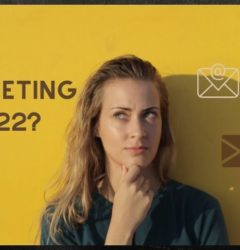
Don’t you just love it when people return to buy your products or avail of your services again and again? But factors like competition and poor customer experience can make people leave at the drop of a hat. In this article, we’ll share tips on how to use email for customer retention, so you can minimize attrition and maximize profits.
Why is customer retention important?
Paying customers are the lifeblood of any successful business. Instead of buying from you just once, turn them into repeat buyers. By continuing to provide value, you effectively prevent them from switching over to the competition.
Customer retention tells a story about how well your company is doing in terms of product quality and service provided. High retention rates mean you’ve got a good relationship with your customers, and they trust and value your brand.
Here are some interesting statistics compiled by Invesp:
- You’re 60-70% more likely to sell to an existing customer than a new one.
- When launching new products, existing customers are 50% more likely to buy them than new customers.
- Retaining customers is up to 5x cheaper than acquiring new ones via various acquisition channels.
- A 5% increase in customer retention can boost your profits by at least 25%.
- 56% of survey respondents say email is the most effective tool for customer retention, outscoring social media marketing, content marketing, referral marketing, and other digital marketing strategies.
But why use email to retain customers though?
Email is fast, cheap, and easily accessible. According to Statista, there were 4 billion email users in 2020, which is literally over half the world’s population. Email is tied to practically anything that requires an online account, including financial services, ecommerce sites, messaging apps, and social media accounts.
Using email to keep your customers engaged and loyal to your brand is a no-brainer. Plus, the sky’s practically the limit when it comes to the type and number of emails you can send to your customers.
For instance, you can use email to:
- Touch base with your customers regularly
- Ask them for feedback regarding your products or services
- Educate them on how to get the most out of their purchase
- Improve customer satisfaction
- Show them what’s happening behind the scenes
- Send marketing emails
- Respond to incoming messages
- Ask them to participate in product testing or surveys
Using email, along with other communication channels, can help improve customer relationships, too.

Retention strategy: How to use email for customer retention?
Making your customers stick around is easier said than done, especially if you’ve got tons of competition. Here are 10 tips for using email to improve your customer retention rates:
1) Personalize your emails
It may sound difficult to personalize emails when you’re sending them in bulk, but it’s not impossible.
When collecting people’s email addresses, see if you can get them to give you not just their email address but their name as well. Now, many people will probably hesitate to give you their full name. But asking for their first name shouldn’t be too difficult. Tell them it’s so you know what to call them in your emails.
Address your customers by name, either in the subject line or in the email itself. You can use the {first name} and/or {last name} placeholder in Blue Odin, like you see below:
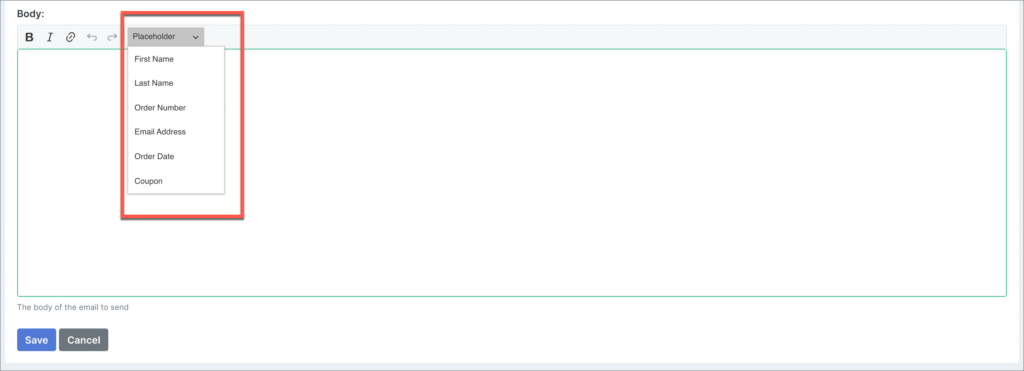
2) Segment your email list
Another way to personalize your emails is by properly segmenting your users. This means the customers who bought cleaning supplies from your store shouldn’t be receiving emails from a totally unrelated product or department, for example, makeup kits.
Email segmentation is an extra step, sure, but that extra bit of work will help you send highly targeted and relevant emails to the right customers.
Below is a screenshot of customer email segments in Blue Odin. There’s 3 in the example but you can create as many segments as you like.
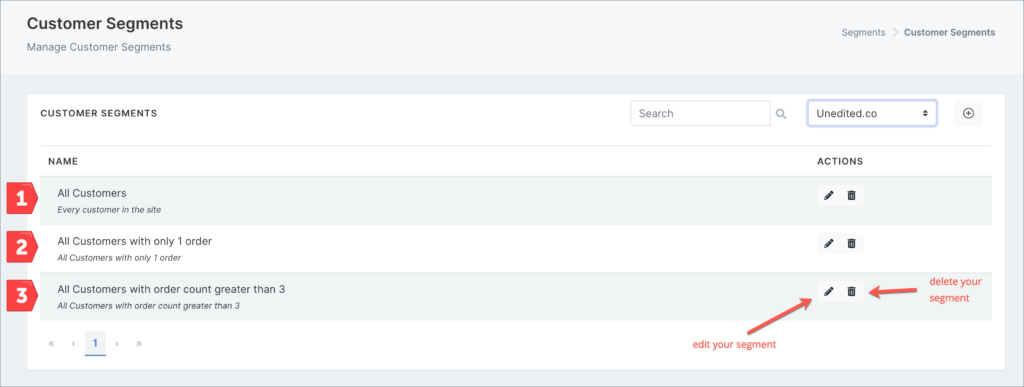
3) Send emails using your company email address
As a business, it’s important to have your own domain name and company-branded email address. For example, if your store’s website is abconlinestore.com, then create an email address that uses the same domain.
Examples would be:
customerservice@abconlinestore.com
… and so on.
We all receive far too many unsolicited emails every day. Make it easy for your customers to recognize your email address, so they’d be more likely to click through and read your email.
4) Adding value to emails help with customer retention
People sign up to email lists for a reason. If they don’t get what they signed up for or they’re not getting any value from your emails, then they’ll unsubscribe. Remember, you’re not the only business vying for their attention.
So, before you send out your emails, put yourself in your subscriber’s shoes and ask:
- What’s in it for me?
- Will I get any value from this email?
- Why should I keep reading?
- Why should I NOT delete this email from my inbox?
- Why should I NOT unsubscribe?
- Why should I NOT mark this email as spam?
If you answered affirmatively, then send out your email to your subscribers!
5) Show some personality
The last thing you want is to sound like a robot in your emails. Grab your readers’ attention by injecting some personality into your writing. It goes without saying that the most engaging emails are those that use an undeniable human voice.
Be warm and conversational, like you’re talking to your reader in person. Rope them in with words you’d actually use in real life. Sure, you may need to use some big, formal words from time to time. But for the most part, use simple words to get your point across.
Make your emails relatable to your audience. Are they the type to say “kicks” instead of “shoes”? Or do they “hodl” instead of “hold” when it comes to investments? Best get to know who your readers are before sending your next email!
6) Make them look forward to your emails
Injecting personality in your emails is one way to make your readers chuckle. But how do you make them look forward to your content?
While it’s true that you can’t please everyone, make your emails resonate with a great majority of your readers. There is where the benefits of doing your research and identifying your target audience come into play. If you know who they are, then it’s easier to create content they’d be interested in.
Another tip is to engage them in conversation… and keep that conversation going until the next email. Which, by the way, shouldn’t be sent too long after the previous email, else they might forget what the conversation was all about. Give them a teaser on what to expect on the next email – and when it will hit their inbox.
7) Stay on brand
It’s important to stay on brand whether you’re sending out a marketing email, a newsletter, or a transactional email.
For consistency and cohesive brand identity, inject the same tone of voice and personality in all email communications.
And don’t forget to use your company logo, brand colors, and fonts across all marketing channels to build brand recognition and trust.
8) Be responsive
When people send you emails, make it a point to reply right away. Whether that’s a sales question or a complaint, a speedy response can go a long way to making your customer satisfaction ratings go up.
If the email’s been received outside of office hours, set up an autoresponder to let them know what’s happening and when they can expect a reply. Then make sure you do reply!
9) Automate your emails
Automation is a huge time-saver when it comes to sending bulk emails. Instead of manually sending out emails one at a time, you can upload and schedule them well in advance using an email marketing app like Blue Odin.
In addition to creating customer segments, you can send out trigger-based email sequences as well as one-off email campaigns in Blue Odin. Get higher engagement rates and boost your sales with email automation!
10) Make your emails shareable!
Happy customers are more likely to recommend you to their friends and followers if they’re satisfied with your product or service.
So, craft your emails carefully and make them share-worthy, not just over email, but on social media, too! There’s a real opportunity to win over new customers here, so make each email count.
Feel free to download and print our email marketing checklist here.
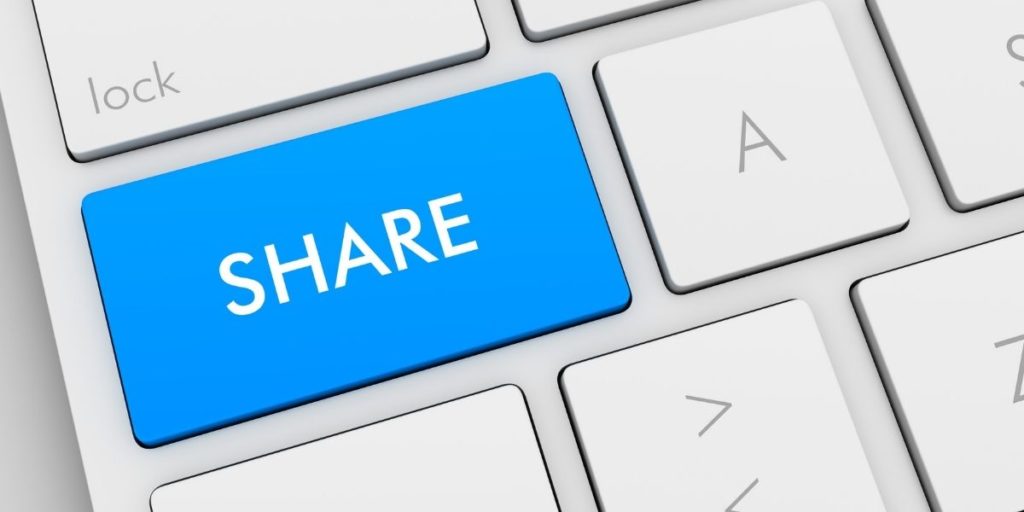
7 Customer retention email examples
Here are 7 customer retention email examples that will help entice your customers to shop with you again:
1) Welcome emails
Here’s your chance to make a great first impression on your email subscribers. Give them a warm welcome and thank them for subscribing to your list.
But don’t just stop there. Depending on the nature of your business, a welcome series may be more appropriate. According to Inbox Army, welcome emails generate 4x the open rate and 5x the clickthrough rates versus promotional emails.
Here’s an example of a great welcome email from Diet Doctor:
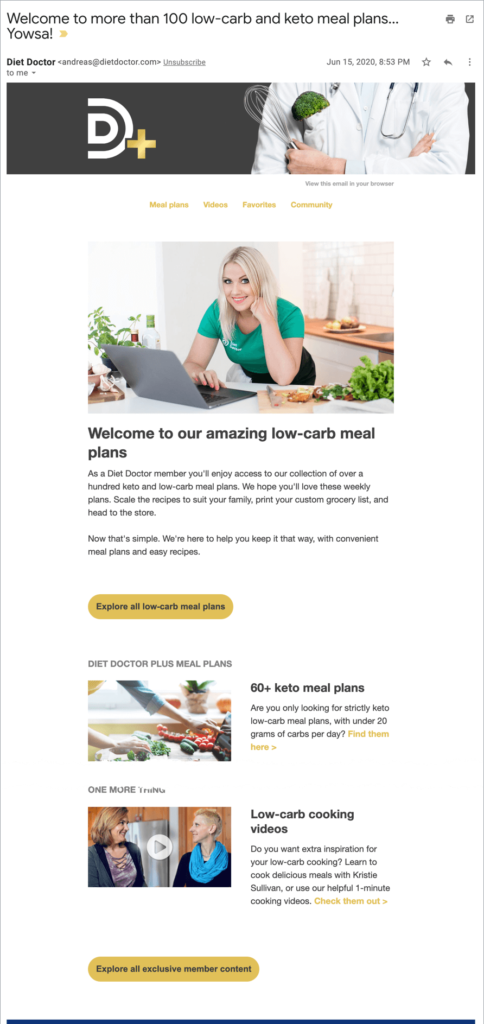
2) Feedback / product reviews
Let your customers know that their opinion matters. Take criticisms in stride – don’t take it personally – and use the feedback to improve your product or service. And don’t forget to thank them if they do take the time to leave a review.
3) Educate your customers on how to use your product / service
People do business with people they trust. So, establish yourself as an authority in your industry.
Give out tips on how they can make full use of your products / services. If you’ve published tutorial articles or videos, link to them from your email and ask them to check it out.
This email from Intelligent Labs hits two birds with one stone – it educates the buyer about the health benefits of their supplement + they ask for a product review. This is a great example of an email that provides tons of value, which can help with customer retention, too.
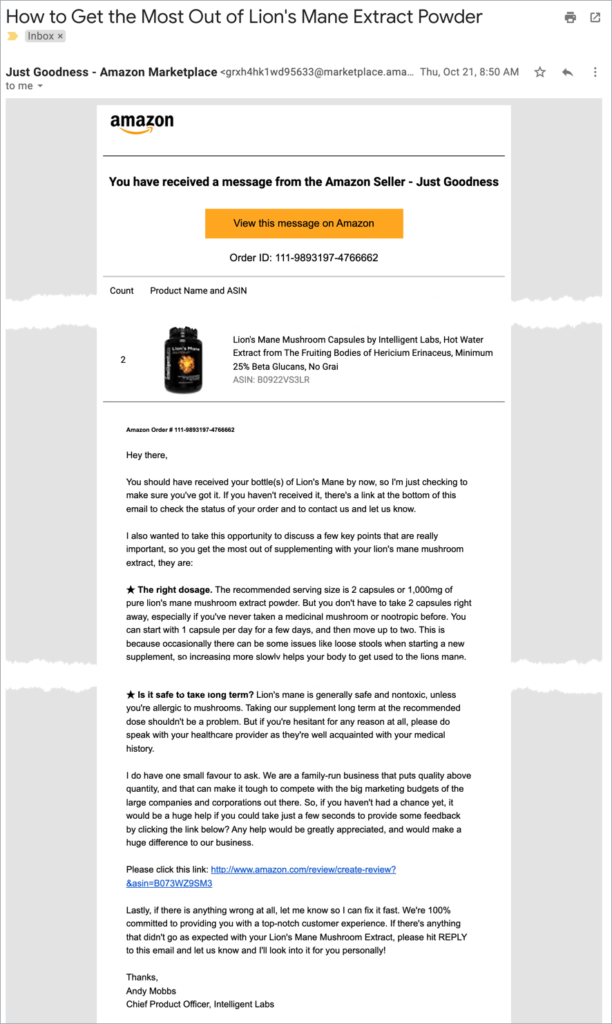
4) Show the human side of your business
Give your customers a peek into some behind-the-scenes activities in your company.
For example, you can show what a full day at work looks like, your team-building activities, your company pets doing zoomies in the office, and all that fun stuff.
This type of content is also great for cross-promoting on social media, so you’re essentially hitting two birds with one stone with fun emails like this.
5) Reward loyal customers
Make your loyal subscribers feel special by offering them discounts not available to anybody else. Or give away free items if they spend $XX amount within a specified timeframe.
You know your customers best, so think of ways to reward them for being loyal to your brand.
6) Happy birthday email
You can only obviously send this type of email if you know your subscribers’ birthdays. If you do have this data, then make an effort to reach out and greet them on their birthday.
To make them feel even more special, consider gifting them a special birthday discount code.
7) Win-back email
Touch base with inactive customers who haven’t purchased from your store in a while or interacted with your emails (but haven’t unsubscribed from your list).
Hook them in with a clever subject line to get them to click through to your email. Give them the option to stay or go, and promise to make it worth their while if they choose to stay.
Conclusion
Email is an important communication tool that can do a lot for your business. They’re not just highly effective for marketing and sales, but also for lead generation, lead nurturing, and customer retention. And by automating your emails using Blue Odin (or a similar email service), you can save time and increase your bottomline at the same time!
